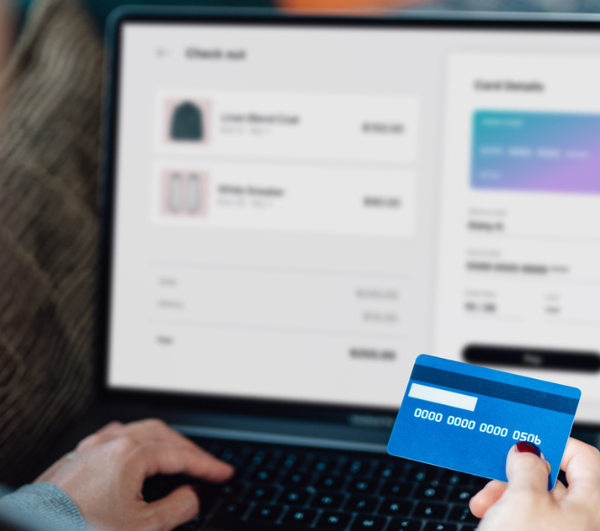A payment aggregator (PA) is a company that connects merchants with acquirers, and this article discusses how payment aggregators work and the difference between payment aggregators and payment gateway.
Payment or Merchant Aggregators are third-party service providers that enable businesses to take customer payments by integrating them into their websites or applications. In other words, a payment aggregator (PA) is a company that connects merchants with acquirers. The PA gives you access to a sub-merchant account and accepts consumer payments on your behalf. Finally, it transfers the funds to you in phases. This period is called the settlement period. They offer various payment options like UPI, net banking, credit card, debit card, wallets, EMI, pay later facilities, etc.
How Do Payment Aggregators (PA) Work?
There are multiple steps involved in payment processing by PAs.
- Customer Makes the Payment
Whenever a customer is making a payment through net banking, UPI, debit card, or any other payment option, PA encrypts these payment details. Then, the PA conducts a fraud analysis before transferring funds to the acquirer’s bank.
- PA’s Acquirer Bank Receive Transaction Information
The payment aggregator’s acquirer bank receives the transaction data. After validating the payment details, the acquirer delivers the client information to the appropriate card company.
- Fraud Check by Card Company
After receiving the transaction information from the acquirer, the card company verifies whether the card was issued by them or not and conducts a fraud investigation. After that, it transfers the information to the Issuer Bank through the payment processor.
- Issuer Bank Accepts/Rejects the Transaction
The customer’s bank is known as the Issuing Bank or Issuer. This bank validates the customer’s information and determines if the account has adequate funds.
After that, it sends the card network a transaction approval or refusal message. From here, the transaction approval information is transmitted along the same path it came in –
Issuer – Card Network – Acquirer/Acquiring Bank – Payment Aggregator. The merchant is notified of the transaction status by the payment gateway about their merchant payment. The merchant then notifies the consumer.
- Payment Settlement
After the transaction has been approved, the acquirer requests cash from the Issuer. As previously stated, this is the acquiring bank linked to the payment aggregator. The money in the merchant account is settled by the payment aggregator. The settlement may be normal, requiring T+ 2 to 4 days. On the other hand, the settlement can be instantaneous, taking as little as 15 minutes!
Payment Aggregator Companies in India
There are two types of payment aggregators in India. They are private(third-party) payment aggregators and payment aggregators offered by banks. Before the early years of the twenty-first century, Payment aggregator services were previously only available through banks. On the other hand, the majority of merchants were searching for technologically advanced payment options. This gap was filled by third-party payment aggregators, who disrupted the industry with creative solutions.
But non-bank payment aggregators require a separate RBI authorization. This is because ‘managing funds’ is regarded as a typical component of a bank PA’s job.
The Aggregator service from PayU makes the payment process easier for e-commerce marketplaces and small businesses. If you’re developing a business that links buyers and sellers, you can utilize your PayU account to get your sellers paid. An aggregator solution accomplishes several settlements on a single approved transaction.
Payment Aggregator Vs Payment Gateway
A Payment Aggregator provides clients with various payment choices, eliminating the need for a separate integration system. A payment gateway (PG) offers the technical infrastructure to help people make online payments.
This is the key distinction between a payment aggregator and a payment gateway. The payment aggregator is in charge of the funds, whereas the gateway is merely in charge of the technology.
Let’s dive deep and understand the difference between PA and PG.
- Authorization
As discussed above, non-banking payment aggregators need separate authorization from RBI, which can be applied to the Department of Payment and Settlement Systems.
Payment gateways are technology providers for PAs. They do not require authorization from RBI, as long as they follow the guidelines on managing risks and code of conduct in outsourcing of financial services outlined by the RBI.
- Governance
Payment aggregators management must satisfy RBI’s fit and proper standards.
- Anti-Money Laundering Measures
The RBI’s Know Your Customer (KYC) / Anti-Money Laundering (AML) / Combating Financing of Terrorism (CFT) standards are followed by all Payment Aggregators.
Furthermore, payment gateways do risk assessments. From a contractual or commercial compliance standpoint, this detects any weaknesses or risks to asset confidentiality or integrity.
- Seller/Merchant Onboarding
The Board has adopted a merchant onboarding policy for PAs. They do background checks on their merchants to verify that they’re not committing fraud or selling counterfeit goods.
Payment Aggregators also assure compliance with the Payment Application-Data Security Standard (PA-DSS) and the Payment Card Industry-Data Security Standard (PCI-DSS).
During the merchant onboarding procedure, the Payment Gateway follows identical guidelines. They conduct extensive security evaluations.
FAQs
A payment aggregator handles funds and payments, whereas a payment gateway provides technical infrastructure. This is the key distinction between a payment aggregator and a payment gateway. The payment aggregator is in charge of the funds, whereas the gateway is merely in charge of the technology.
Existing PA must reach a net value of 15 crores by March 31, 2021, and 25 crores by the conclusion of the third financial year, on or before March 31, 2023. After that, a net worth of 25 crores must be maintained.
Merchants or vendors are Gateways in general. Not all companies can operate as Payment Aggregators because it requires a significant amount of resources and commitment. But some payment companies act as PA and PG. This is called a hybrid model.
Payment Aggregator is a term that refers to a collection of multiple payment gateways. The service provider would integrate several electronic payment methods, such as different payment gateways, and put them all under one roof. Payment aggregator services such as Billdesk and Instamojo are two notable examples.
Debit cards, credit cards, wallets, UPI, and other traditional payment methods may be used by a payment aggregator to collect payments. Payment aggregators act as a middleman, bridging the gap between the payer (customer) and the payee (payee) (merchant).






